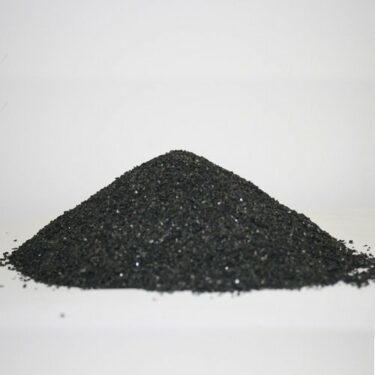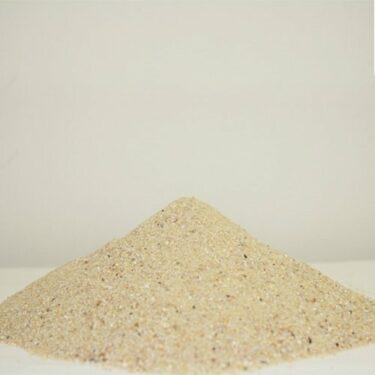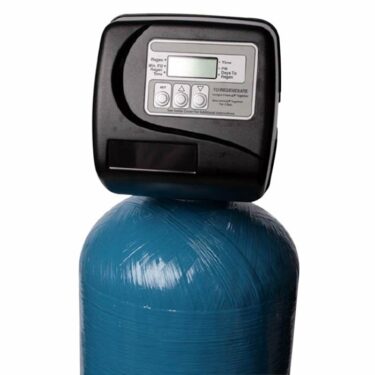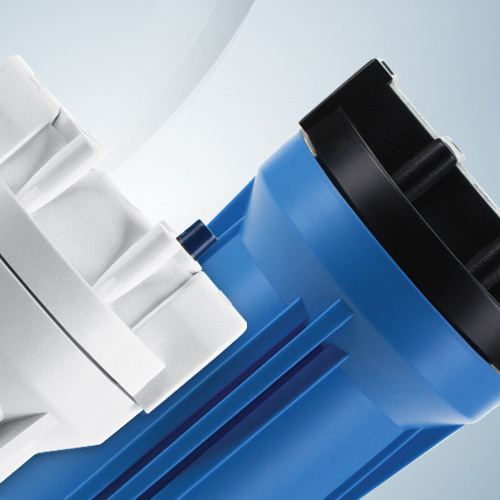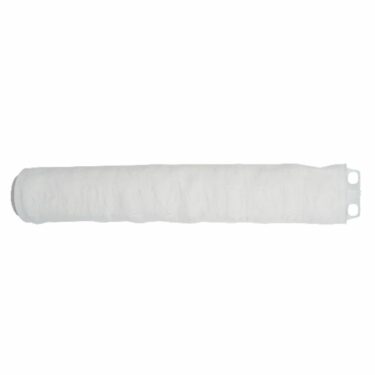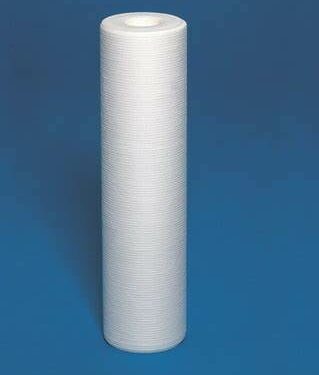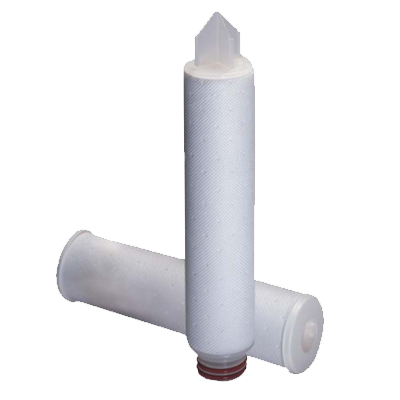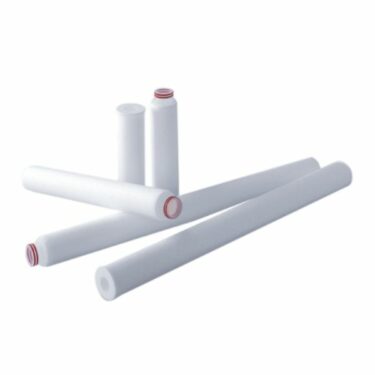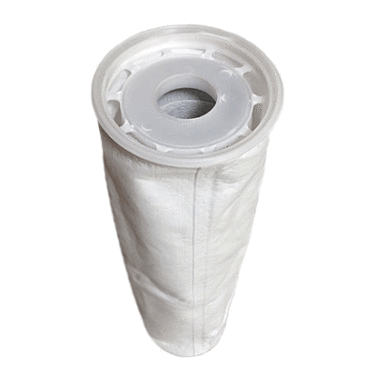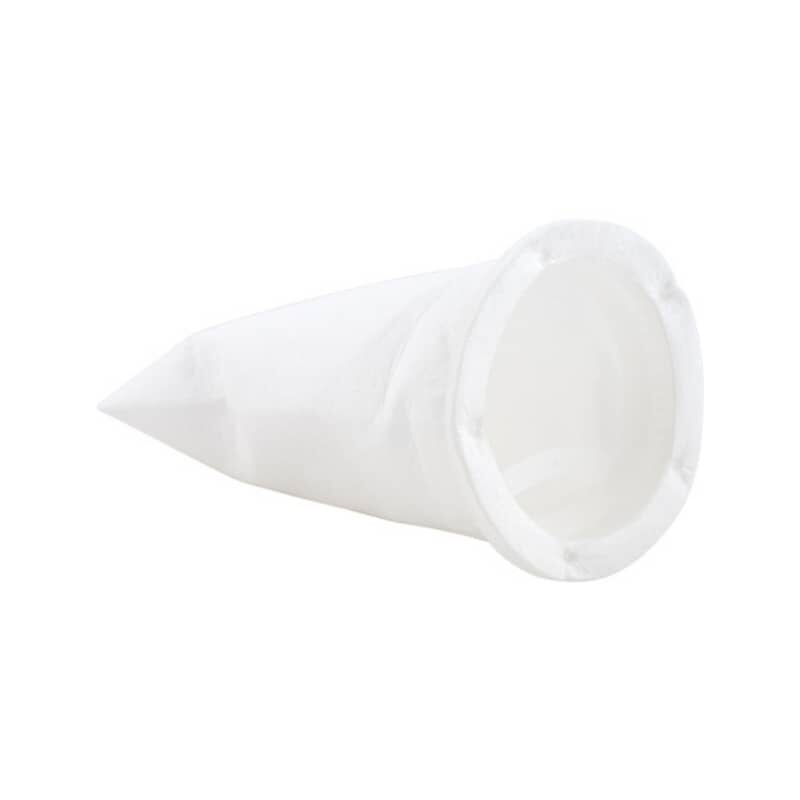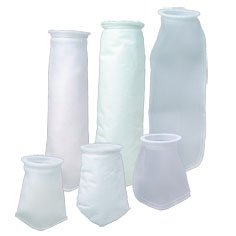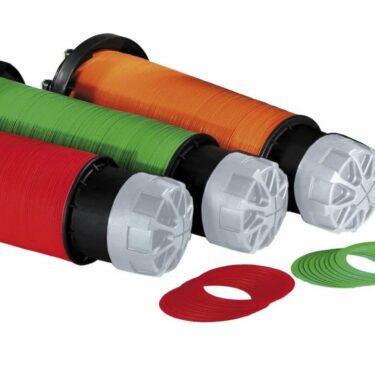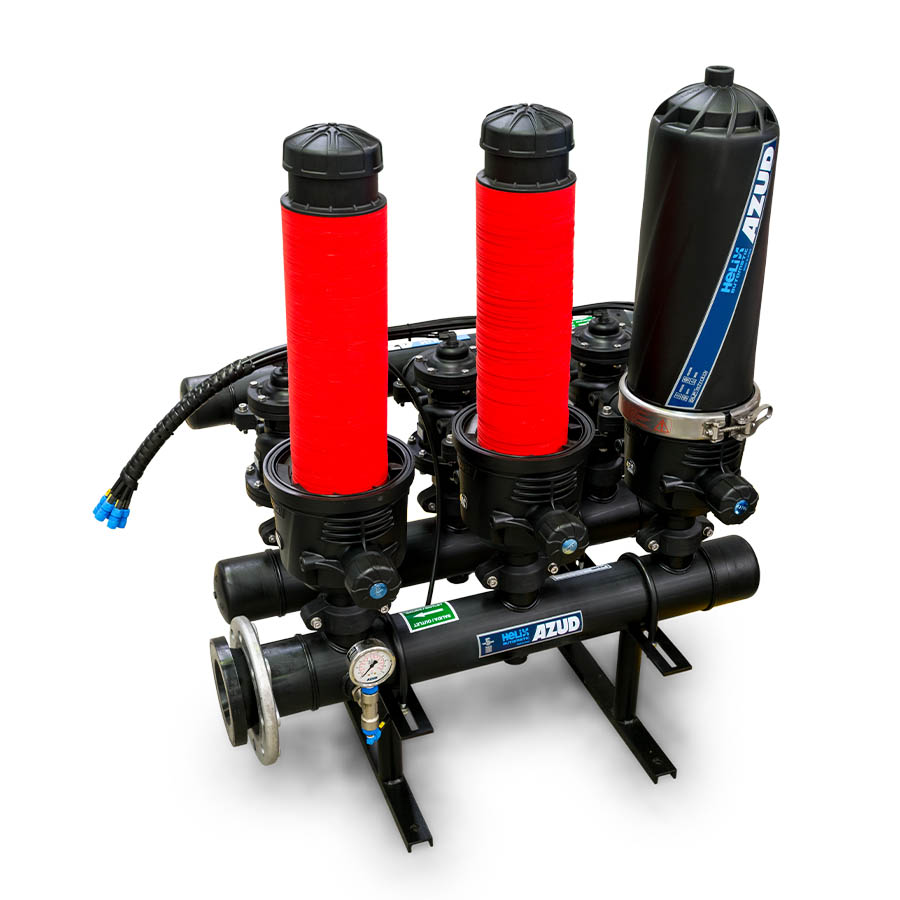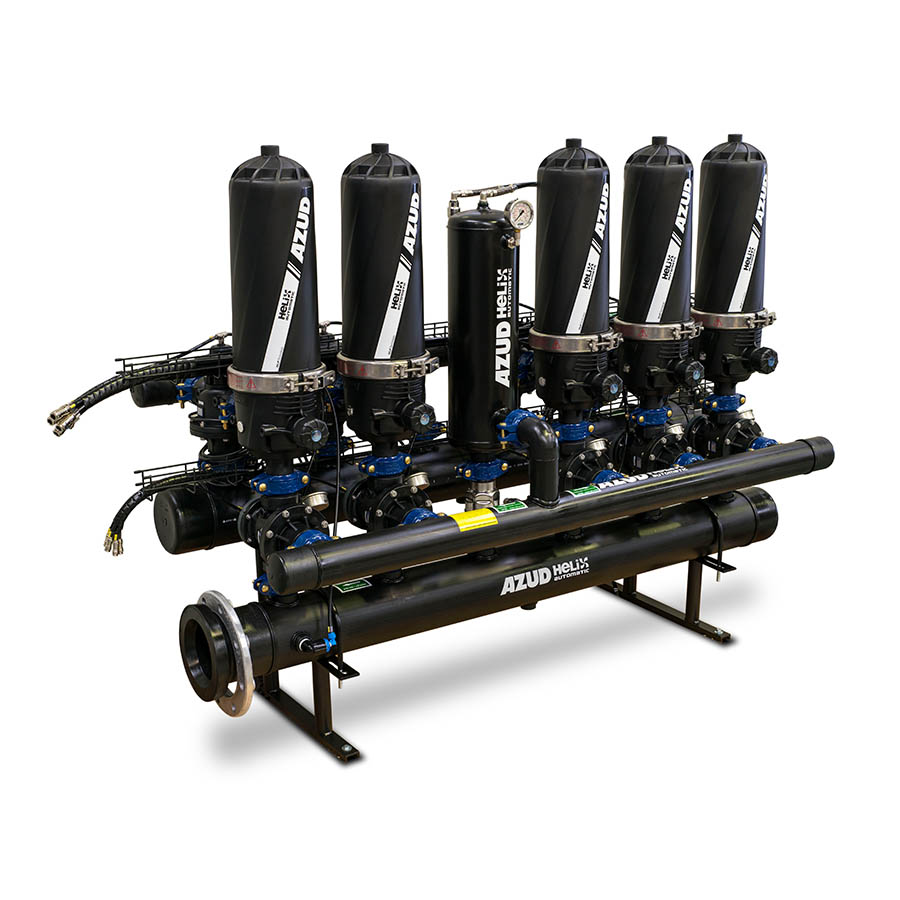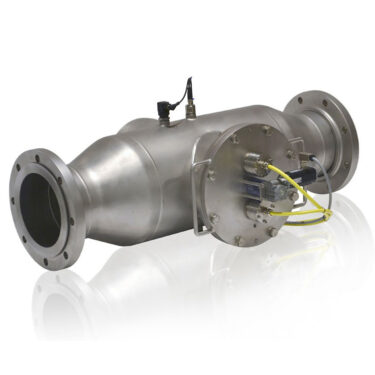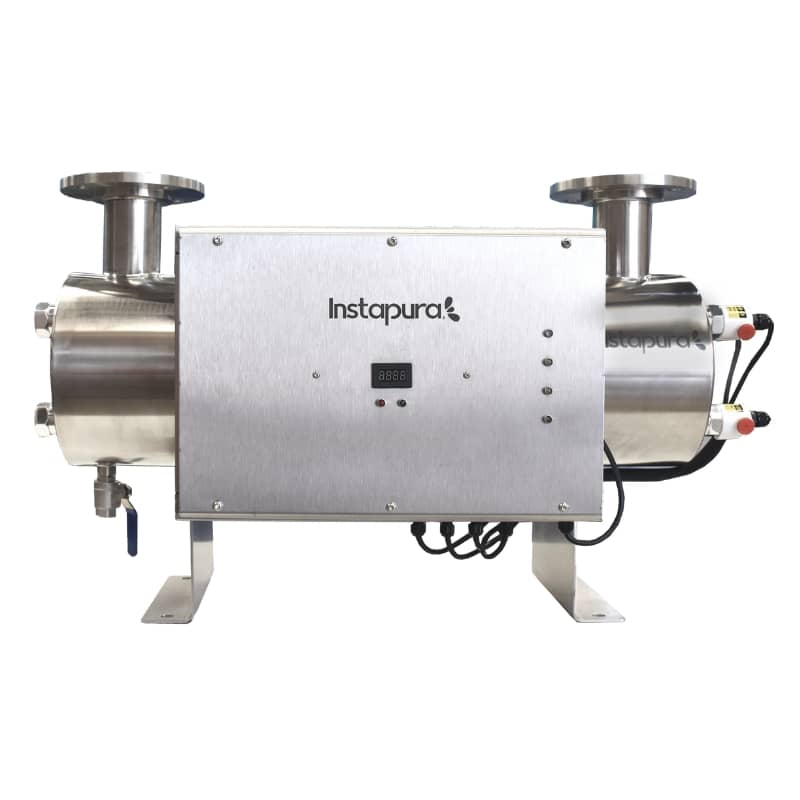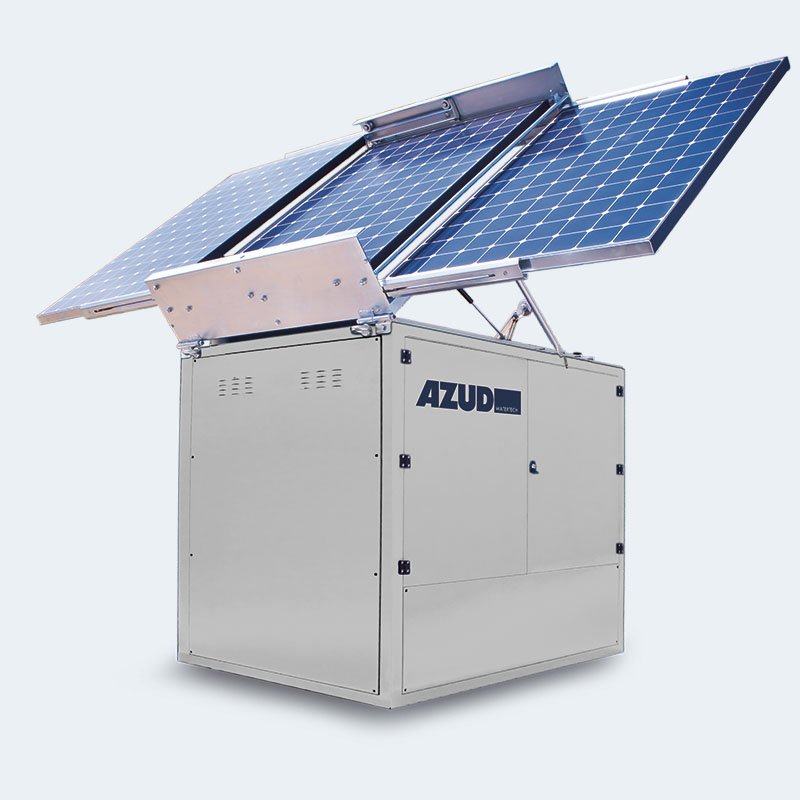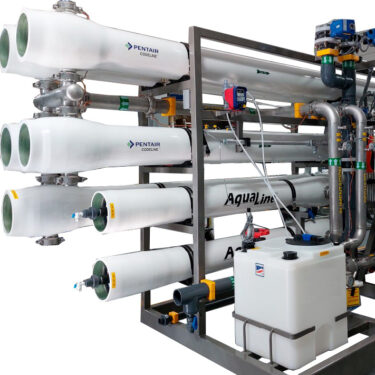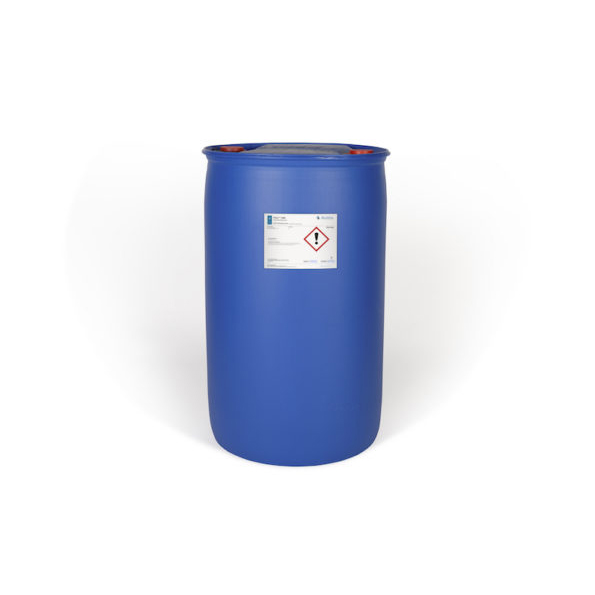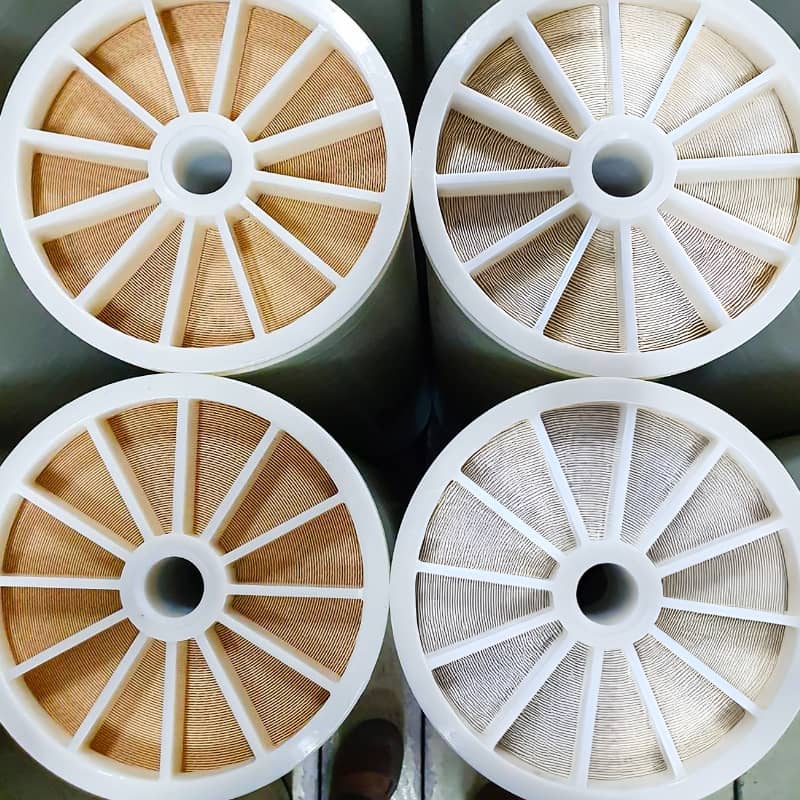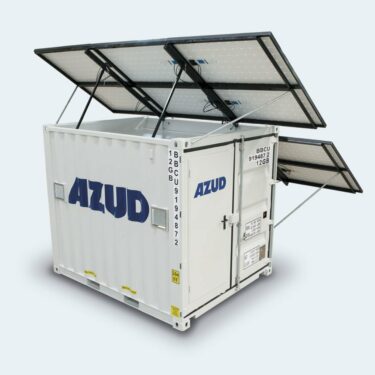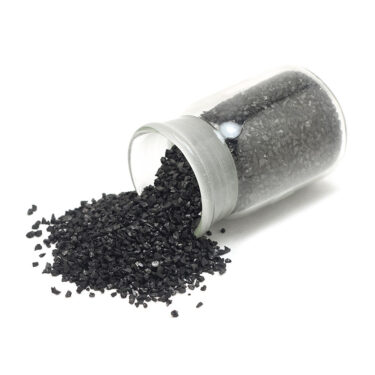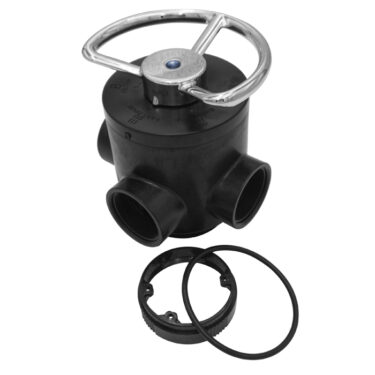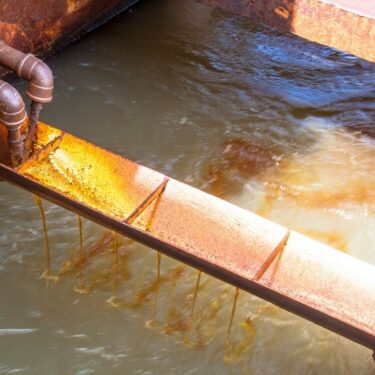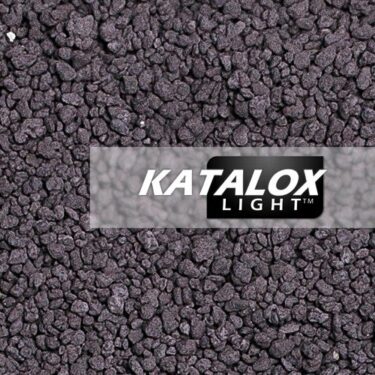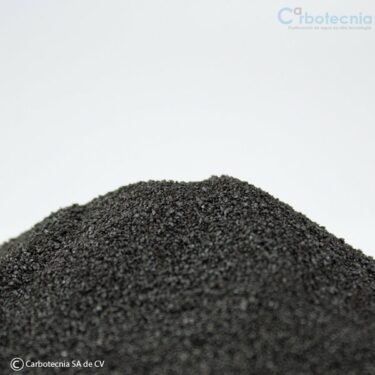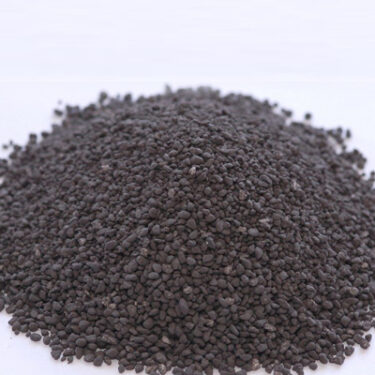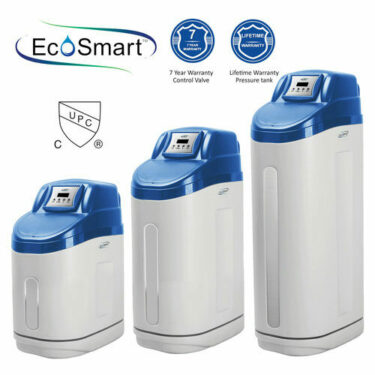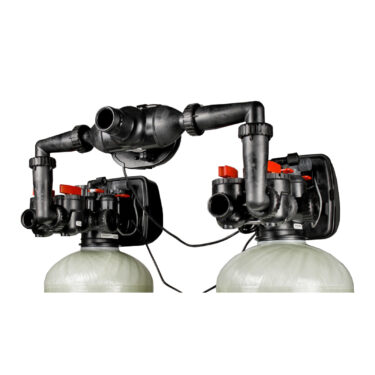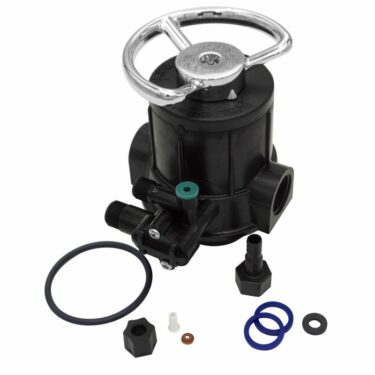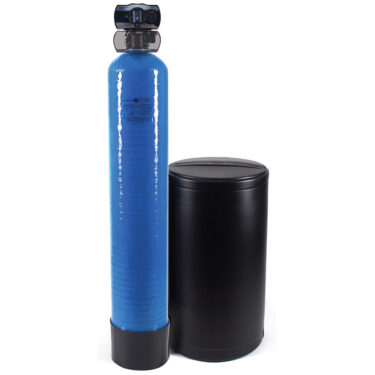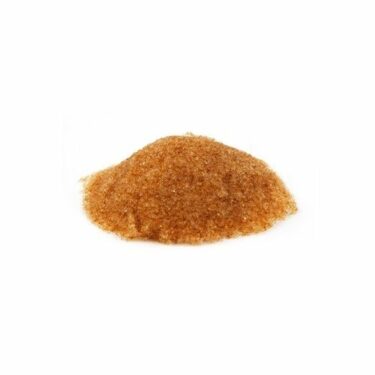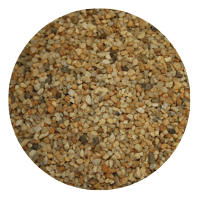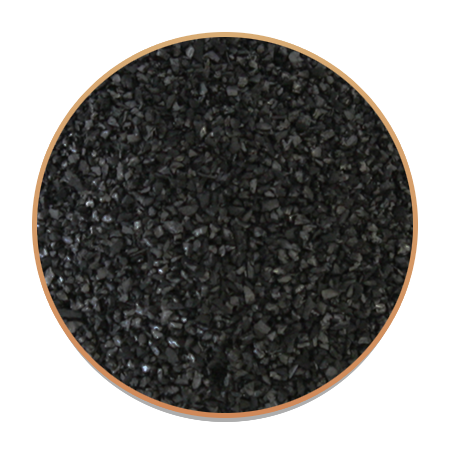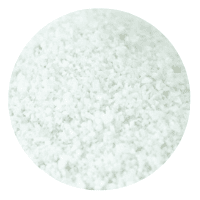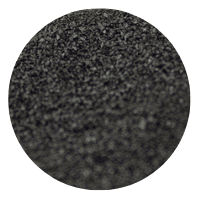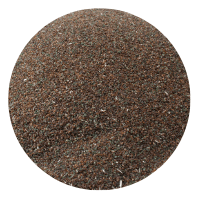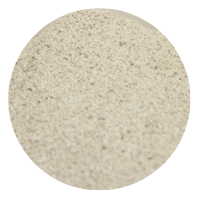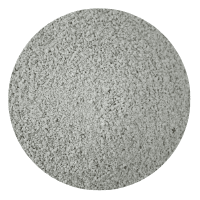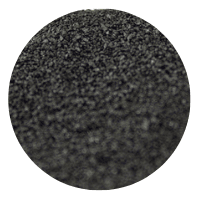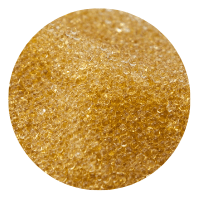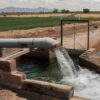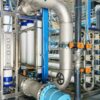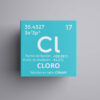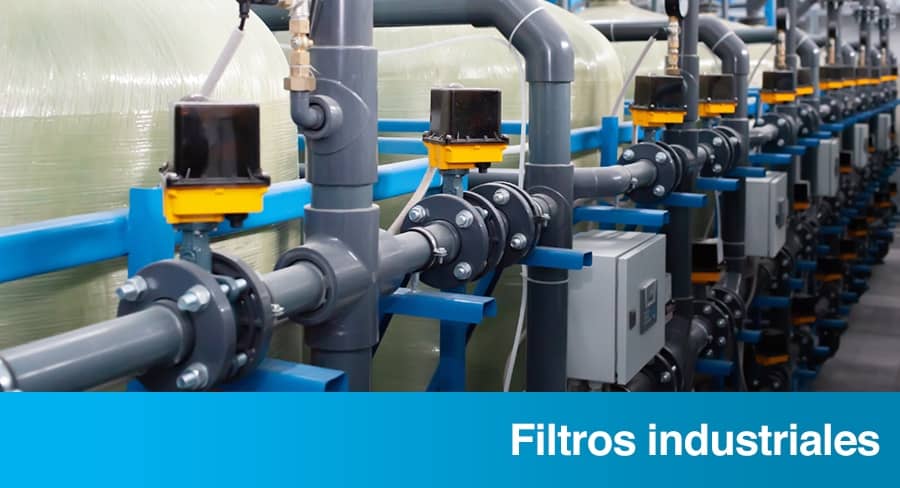
Industrial water filters
Industrial water filters are increasingly used because water quality is becoming more and more important in industry, firstly due to international standards for the production of equipment and products with a higher degree of purity, and secondly because the water supply sources suffer from contamination due to population growth and waste regulation is slower than the level of growth, especially in Latin American countries.
What we are now involved in is improving the quality of the water we use and reusing the industrial wastewater we dispose of. But let’s first go through the main concepts of this topic.
What are industrial water filters?
Industrial filters are systems that involve a series of stages to remove unwanted material from water used in industrial applications.
These materials include solid or dissolved particles or sediments, dissolved metals, chemicals, odors, minerals and other impurities. The main function of industrial water filters is to protect human health if water is an important part of the product to be manufactured or a secondary ingredient, in addition to components or machinery in industrial applications.
Advantages of an industrial water filter
Contamination level
It is important to investigate the amounts of impurities in the water for proper and frequent cleaning, as well as to replace industrial filters.
Filtration volume
The calculation of the treatment volume is related to the use that will be given, as well as the layout of the supply sources, the size of the pipes and the pumping required. If the filtration will be continuous, a duplex industrial filter is needed to allow the maintenance of the filters without stopping the process.
Quality standards for filtration
It all depends on the water that is desired after the filtration process and that is what determines the filters that are required for filtration.
Operating conditions and process requirements
They have to do with flow rate, pressure and temperature. Each filter has an optimum operating task, temperature and flow rate. Failure to take this into account may damage the equipment and force the filtering process to stop.
Nature and characteristics of some contaminants
You must take into account the size of each of the impurities, as well as the contaminants that will need to be filtered by an industrial filter and it is necessary to analyze the contaminants from time to time, as well as to verify the contaminants that represent a health risk.
Places where an industrial water filter is required
- Hotels
- Automotive industry
- Drinking water treatment
- Petrochemicals
- Mining
- Paper mill
- Chemicals
- Pharmaceutical water treatment
- Agricultural and irrigation applications
What types of industrial water filtration are there?
You can choose an industrial water filtration system depending on the specifications of the contaminants you want to remove. These include:
Industrial water filters for sediments.
How do industrial sediment water filters work?
Industrial water filters for solid sediments can be surface filters that physically force the water through a membrane or cartridge filter.
Another alternative are depth filters that have porous materials for the collection of impurities throughout the granular medium, such as anthracites, sands, zeolites, etc.
Surface vs. depth filtration.
Depth filters are the most common for industrial water filtration because they have a higher dirt holding capacity without having pressure drops and collapsing the alternate systems.
Depth filters are also known as deep bed filters. As the pressurized fluid passes through the medium, they restrain contaminants either through attractive molecular forces or by direct collision. Different industrial applications have special requirements for a certain number and types of filters.
Cartridge or bag filters can be used with multiple 7-cartridge cartridge holders where they allow for finer filtration (1 or 5 microns) than a deep bed filter (15 to 25 microns). Cartridge or bag filters require more frequent filter changes and greater care for changes in pressure differential to avoid collapse.
A very popular equipment are the disc filters, these allow large volumes of water without the need to make a constant change of cartridges, since they use cartridges formed by plastic discs, which do not suffer an accelerated wear, so they can last many more years than the deep bed filters and especially the cartridge filters, which have a very short life time.
In addition, in disc filters, water savings in self-cleaning are much lower than in deep-bed filters, and they can be automated and backwashed in sequence so as not to stop the production of filtered water.
What is the difference between deep bed water filter and cartridge filter?
First, let’s explain how each of these work.
The deep bed industrial water filter.
The choice of materials used in a deep bed filter will depend on the type of contaminants to be removed. Typically filter media is layered to filter out different sizes of solids and create a pressure drop in the filter. In the initial stage, the grains are larger to retain the larger sediments. Then, in the middle stage, the filter media is reduced in size to retain smaller particles and the last layer is a gravel media that supports the filter media and distributes the water to exit through the distributors or nozzles. The clean water or product exits the system through the manifold, which retains the filter media and prevents it from exiting with the flow of water.
An important step in the deep bed filters or also called multimedia, is the cleaning of the bed, this is done with a “Backwash” and consists of reversing the flow to expand the filter bed and expel the sediments retained during the service processes, this requires a water flow up to 3 times greater than the one it gives us when it is operating, sometimes it is necessary an additional pumping equipment for this step.
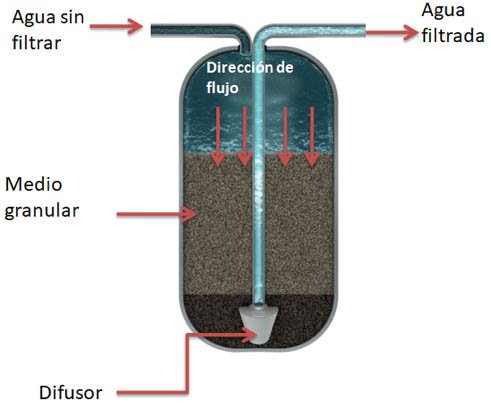
Figure 1. Deep bed filtration system.
Information on deep bed filters can be found here:
Cartridge filter.
The filter media of which a cartridge is composed is one of the most economical but its lifetime is relatively short, the body of the cartridge is made of pressed polyethylene fibers or as a fabric. The medium retains impurities and releases clean water at the outlet. That is, when contaminated water passes through it.
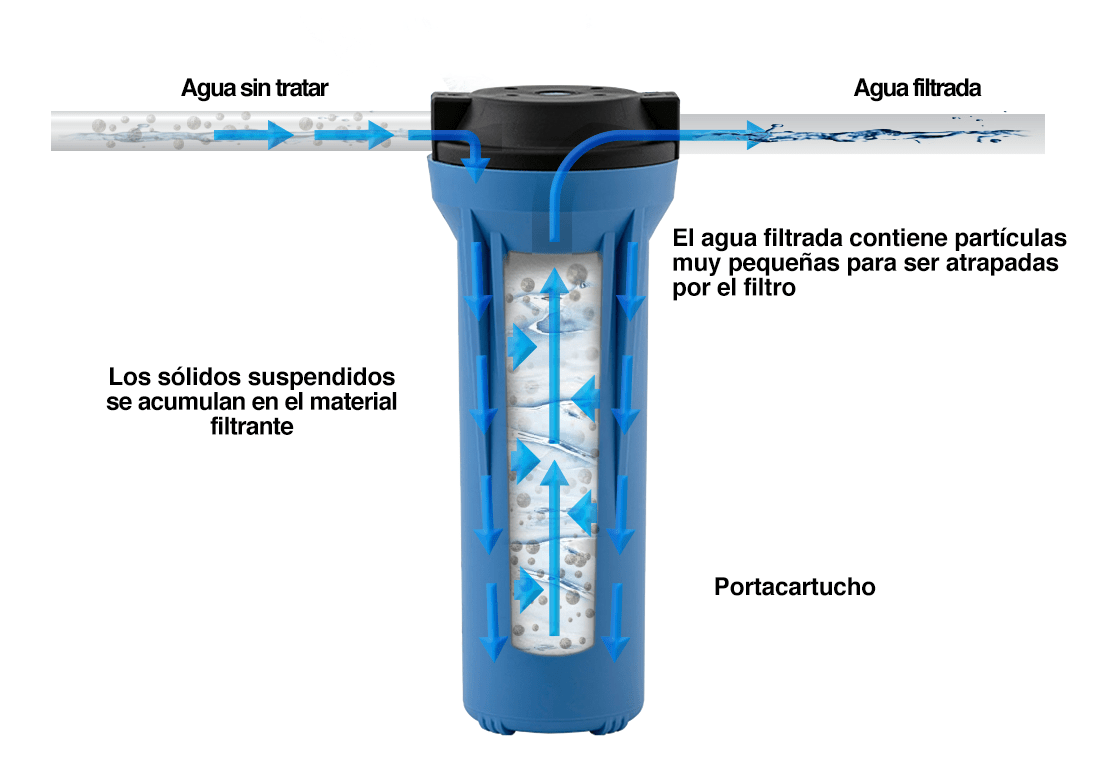
Figure 2. Operation of sediment cartridge.
Water filter cartridges are relatively cheaper compared to deep bed filters and can achieve a considerably high filtration efficiency.
The most common types of cartridges are Polyspun, Spunbonded and Pleated, you can consult the information and technical data sheets of different brands on our website:
Bag filter.
The use of these filters is similar to cartridge filters, although they may have a little better water flow, and if pressure is added, good results can be obtained. The filters have a fibrous material, which allows water to pass through while retaining solids and suspended particles.
These filters are economical compared to other methods, suitable for numerous applications and can be well adapted to certain processes. As with cartridge filters, it is necessary to constantly replace them and to take care of pressure differences.
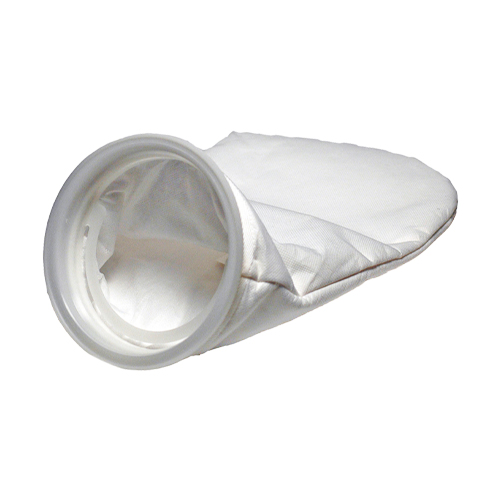
Figure 3. Bag filter image.
Disc filter for industrial use
They were originally created to filter drip irrigation water in agriculture, but the same principle applies perfectly in industry.
The technological advancement of these systems means that we save more water used in the cleaning of deep bed systems and in a better time. In addition, they occupy less space, adjusting to smaller places. They are modular systems that can grow with the need of a higher flow by adding more filters.
Industrial disc filters are used for a variety of applications, including filtration of municipal water and industrial drinking water. They can be used in many different sizes and configurations depending on the needs of your installation. Disc filters work by trapping particles as they pass between discs. This creates a large surface area for trapping sediments between 50 and 130 microns and other contaminants. In some cases, cartridge filters may be more appropriate for certain applications, as their ability to trap smaller particles may make them more effective at removing contaminants from the water supply.
These disc filters are designed with multiple discs that rotate at high speed and create centrifugal force, ejecting contaminants that are trapped in the filter media. This makes them ideal for filtering large quantities of water quickly and efficiently.
Disc filters are used as industrial water filtration systems. They can be used for a variety of purposes, such as municipal drinking water filtration, process water treatment and much more. In fact, disc filters have been used for more than 100 years.
Disc filters work by trapping particles inside the filter media (discs). As the fluid flows through the disc bed, it comes in contact with the discs and seeps as it passes through them. Larger particles tend to stay, while smaller particles pass into the final product stream or storage tank.
Applications of disc and cartridge filters for industrial drinking water
If you are looking for industrial water filtration, disc filters are the solution. They are often used in conjunction with cartridge filters and can be used in a wide variety of industries including:
- Production of beverages and water for washing.
- Food processing
- Cistern water and storage.
- Disc filters can be used to filter municipal water, but they are not ideal for this application because they do not remove suspended solids as well as other types of filters.
- Filter for cooling tower recirculation water.
- Protection of cartridges or other granular filter media and extended cleaning or backwashing time.
- Protection for deep bed filters, reverse osmosis or granular activated carbon (GAC) media.

Figure 5. Operation of a disc filter.

Figure 6. Image of filter element of disc filters.
Consult models, capacities and types of disc filters:
UV ultraviolet light water purification.
It is one of the most effective methods for disinfecting water contaminated by microorganisms. Ultraviolet rays destroy the DNA of microorganisms, killing up to 99.99% when exposed to UV light.
This method is vital for drinking water. It is fast, requires little energy, is easy to operate, is economical, environmentally friendly, and does not use any toxic chemicals and therefore does not leave a residue in the water.
However, it can only kill microorganisms and does not remove any other impurities. In addition, the water has to be pre-treated and clear, as any solid particles can block UV rays.
More information on ultraviolet equipment:
Reverse osmosis.
This purification system uses a semi-permeable membrane that only allows water molecules to pass through. Pumping equipment is used to pump contaminated water at a certain pressure to push it through the membrane, so that pure water is obtained on the other side. In doing so, the water passes from an area of high concentration to an area of low concentration, hence the name reverse osmosis.
This system uses molecule-level filtration, and is perfect for demineralization or desalination of brackish or seawater.
It can also remove all types of impurities, including microorganisms, ions, salts, minerals, heavy metals and organic molecules.
However, the process is slow, and requires constant self-cleaning so it can reject up to 60% of what it produces. The latter, which could be seen as a waste, can be reversed by using this water, because it is of very good quality and has already undergone pretreatment prior to entering the osmosis process.
There are different types of reverse osmosis, these are some of them:
Reverse osmosis membranes
Activated carbon equipment.
In the industry they may also be known as activated carbon filters, but in our view it is more of a purifier than a filter, since its job is not to remove solid sediments, but a purifier of undesirable organic matter in the water. These kits have activated carbon grains.
They can remove chemical impurities such as chlorine, pesticides, iron, detergents and hydrogen sulfide ….. They also improve water quality by eliminating bad odor and taste. Filters must be replaced after they become clogged with impurities.
If you need to purchase an activated carbon equipment, you can consult the systems available in our brand:
Iron and manganese removal catalysts.
The purpose of catalytic filters is to remove iron (FE) and manganese (MG). The filter is usually composed of green sands treated with manganese dioxide, although other materials such as Pyrolox, Katalox, Green Sand Plus (Green Sand) can also be used.
Because these filters combine oxidation and filtration, they can be used to treat raw water with dissolved iron and manganese.
Catalyst filters require significant maintenance, including frequent regeneration with a chlorine or potassium permanganate solution, as it is consumed during the oxidation of dissolved metals. In addition, the equipment requires regular backwashing to remove precipitated iron and manganese particles. The potassium permanganate solution used for regeneration is toxic and must be handled and stored carefully using specific safety measures.
When properly maintained, manganese dioxide filters are very efficient for moderate levels of dissolved and precipitated iron and manganese. They are generally recommended when the combined concentration of iron and manganese is in the range of 3 to 10 mg/L. Note that the frequency of maintenance (backwashing and regeneration) will increase as the concentration of these metals increases.
Some granular media such as Katalox, Filox or GreenSand do not require regeneration because they use the oxygen present in the raw water to oxidize the metals. As a result, the raw water must contain a certain amount of dissolved oxygen and the pH must be at least 6.8 to remove iron and 7.5 to remove manganese. Even under ideal conditions.
Ion or ion exchange systems.
– Water softener.
The most frequently used ion exchanger is the water softener, used to soften hard water. Hard water contains calcium and magnesium compounds, which when precipitated form layers that can clog pipes or damage industrial equipment, especially those that use high temperature water such as boilers or heaters.
Calcium and magnesium are the two most fouling minerals present in water.
The exchange made by the softening resins is for sodium (Na), when water passes through beads (resin), they retain calcium and magnesium ions, and release sodium. Therefore, when the resin becomes saturated with calcium and magnesium, it is necessary to regenerate it with a brine solution, to re-saturate the resin with this element and release the calcium and magnesium so that it can continue its operation. It is necessary to periodically add salt (sodium) to the brine tank.
– Demineralizers with ion exchange resins.
Demineralization can refer to any treatment process that removes minerals from water, the term demineralization is usually reserved specifically for ion exchange processes used for the near total removal of ionic minerals. Frequently, the terms demineralization and deionization are used interchangeably.
Demineralization uses cation and anion exchange resins, sometimes even in the same column or bed, also called mixed.
Some types of resin available in the market are:
How does ion exchange work to demineralize water?
In water, minerals and salts dissociate into their constituent ions. These dissolved solids consist of negatively charged ions known as anions, and positively charged ions known as cations, each of which is attracted to counter ions (or ions of opposite charge).
During an active deionization cycle, water containing dissolved ions is introduced into the resin. The ions in untreated solution will exchange places with the charged ions in the resin beads, clinging to the resin functional groups even when the resulting solution is drained.
Independent two-bed demineralizers.
Two-bed or double-bed exchangers use two or more resin beds, each containing a specific type of resin. In two-bed demineralization, one treats first with a strong acid cation resin (SAC) that captures dissolved cations and releases hydrogen ions (H+) in return. The resulting acidic mineral solution is then passed to the strong base anionic resin (SBA) bed. This second step retains anionic contaminants while releasing hydroxide ions (OH-), which combine with existing hydrogen ions (H+) to form water. The resulting water is low in TDS (total dissolved solids) and has a near neutral pH.
Mixed bed demineralizers.
Mixed-bed ion exchangers offer higher water quality compared to twin-bed systems. The mixed bed contains a mixture of different anionic and cationic resins in a single column. As the water flow enters the mixed bed, cation and anion exchange reactions take place simultaneously within the same equipment, which has the positive effect of avoiding sodium leakage that can compromise the quality of the water produced by a separate bed system.
While mixed-bed exchangers produce higher quality water, they also require a more complex resin regeneration process, which needs to separate the resins to regenerate separately. In addition, mixed bed units are more susceptible to fouling from improperly performed regenerations.
The most frequent application for the mixed resin bed is demineralization after a reverse osmosis process, as it treats water with very low TDS, its lifetime is longer without needing frequent regeneration.
What factors should you consider when choosing an industrial water filter?
The different filters have advantages and limitations. You must consider all factors to achieve the required filtration level. The following factors will be crucial to the performance of your filters:
– Contamination level.
The use of a sedimentation pretreatment if the raw water has large amounts of solid impurities. In addition, you will need to carry out frequent cleaning and replacement of filters if the water is heavily contaminated.
– Filtration volume.
The calculation of treatment volumes depends on the intended use of the product water. Arrangement of supply sources, pipe diameters and pumping requirements.
Applications requiring continuous filtration can overload systems and require non-stop work. In these cases duplex filters can be used to allow filter maintenance without stopping the treatment process.
In case the treatment can operate in batches, you can use simple filters and schedule downtime for maintenance.
– Quality standards for the required filtration.
The quality of water you want after the filtration process will also determine the types of filters you need for your operation. If you are filtering water for human consumption, then your filters must be capable of removing compounds that are harmful to humans, as described in Mexican standards, such as the level of coliform bacteria, heavy metals and any other hazardous products.
– Operating conditions and process requirements.
Operating requirements include flow rate, pressure and temperature. Each filter has an optimum and maximum operating pressure, temperature and flow rate. A design that does not take these variables into account can result in poor pressure drops or poor contact time, which can also damage your equipment and force you to stop the process.
– Nature and characteristics of contaminants.
We must take into account the size and type of impurities you need to filter. Solid and dissolved contaminants will require different types of filters. In industrial filtration, it is necessary to periodically analyze the contaminants to prevent them from varying and to ensure that the system is installed.
In addition, we must determine whether the contaminants pose a health risk to employees. If so, then you will need a more specialized facility and support equipment to ensure maximum health protection for operating personnel.
– Filter operating cost.
It should consider the initial cost of the plant and other peripheral expenses, such as installation and site preparation costs. In addition to a run of filter media replacement as maintenance, salt refills for softeners (the latter can be reduced with salt saving resin).
You should also consider the cost of waste disposal.
Cost savings due to prolonged downtime for service and maintenance.
Where can the industrial water filter be used?
Industrial water filters can be used in various industries. You may decide to customize industrial water filters to meet the particular needs of your application. They are essential in the following factors:
- Hotels
- Automakers
- Paper manufacturing plants
- Food and beverage industries
- Chemicals
- Agricultural and irrigation applications
- Drinking water treatment
- Mining
- Petrochemicals
- Wastewater treatment
- Dyeing and trouser industries
- Pharmaceutical water treatment, among others.
What are the best industrial water filter materials?
The materials used must be resistant to oxidation and strong enough to withstand high pressure working conditions. For these reasons, stainless steel offers the best material if your process operates according to sanitary standards and is resistant to changes in temperature and pressure.
Stainless steel membrane carriers can be used in reverse osmosis systems to improve performance and lifetime.
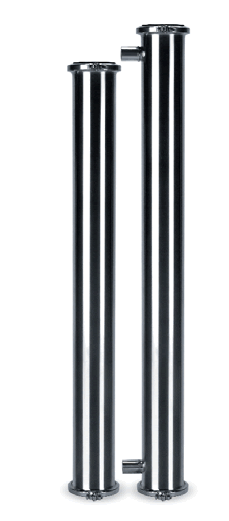
Figure 9. Image of stainless steel diaphragm case.
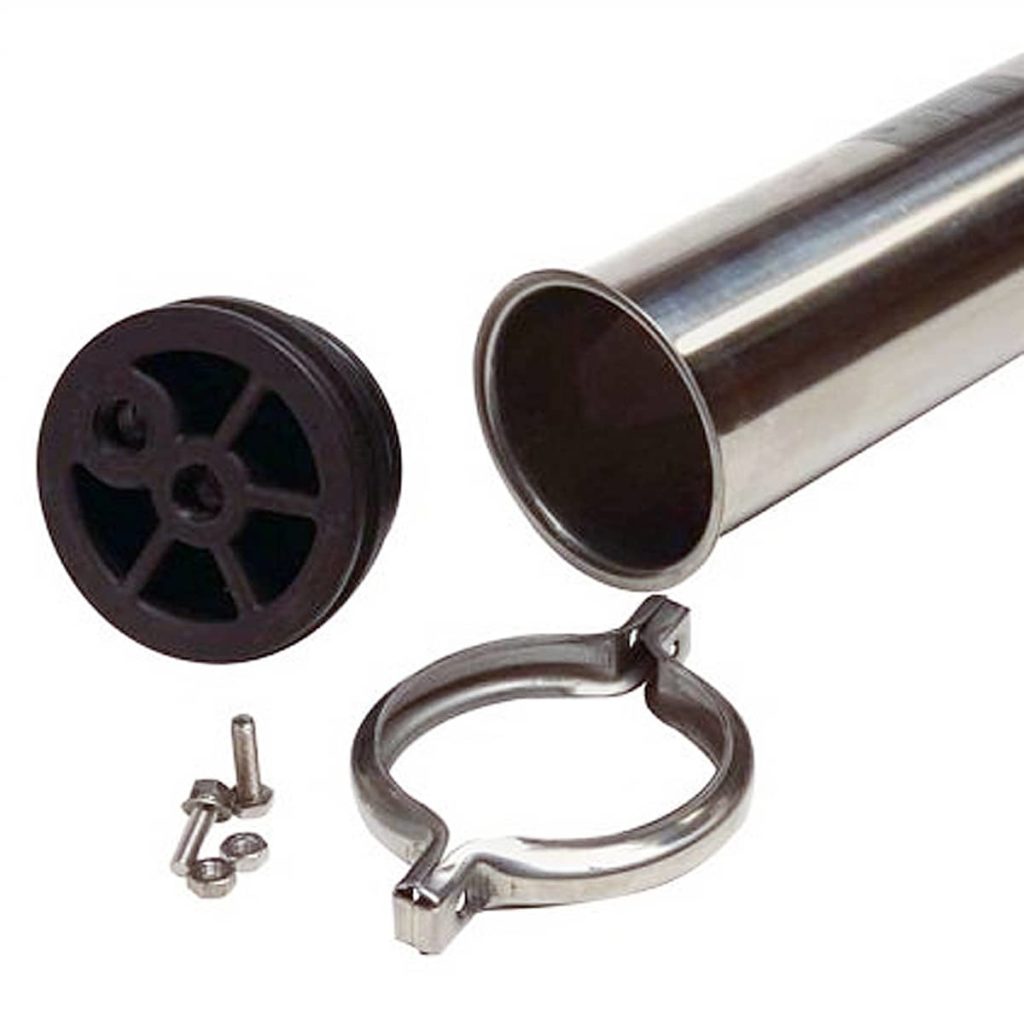
Figure 10. Image of stainless steel diaphragm bag components.
Industrial filtration systems, as an alternative, can use plastic, polypropylene and fiberglass exterior materials that can withstand high pressures because they are also rust resistant and are more economical. Industrial carbon steel tanks are also available on design when flows exceed line tanks.
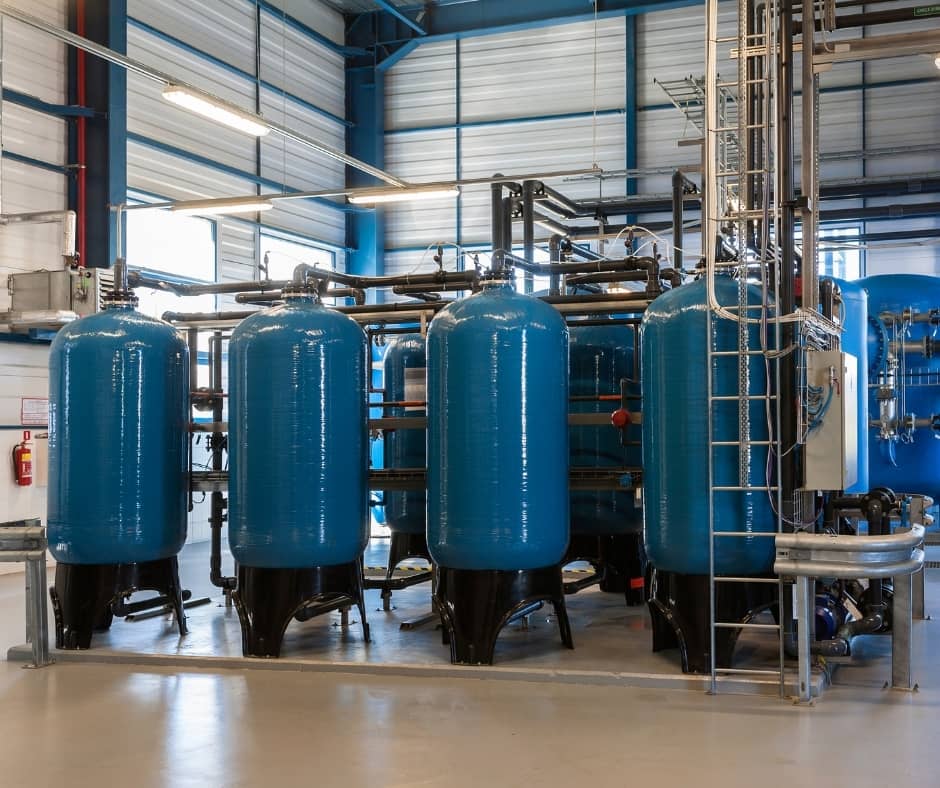
Figure 9. Image of industrial filtration systems with fiberglass tank.
What are the most commonly used filter media in industrial filtration?
For each application the filter media can be chosen from one of the following.
– Gravel and silica sand.
Sand and gravel are widely used materials in water filtration. They are suitable for removing suspended particles and some turbidity. The gravel is coarse, it is used at the bottom of the filter to support the filter media, it provides uniform water distribution.
– Activated carbon.
It is one of the most widely used materials for purifying drinking water. This purifier is used to remove organic impurities, chlorine and improve the odor and taste of water.
– Calcite.
This filter media regulates the pH of acidic water. When water passes through it, calcium carbonate dissolves and raises the pH of the water in the process. It also reduces the levels of lead, copper and other metals.
– Anthracites.
This sediment filter media offers a higher flow rate. In combination with sand and garnet. It also removes turbidity to a limited extent.
– Garnet or Garnet.
It is a very hard granular media, which makes it perfect for as part of duplex or multimedia deep bed filters in combination with Anthracite. In addition, the main advantage of using this material is that it is highly resistant to abrasion and chemical erosion.
– Zeolite.
It is a filter medium that can retain suspended solids up to 5 microns, due to its porosity, to a lesser extent than a resin can make a slight cation exchange. It is a light material by density, so it can be backwashed with less energy. It can be used in filters for many industrial applications.
– Filter AG.
It consists of anhydrous silicon dioxide and is ideal for removing suspended solids in multimedia equipment.
– Green Sand.
Contains siliceous material to catalyze water contaminated with hydrogen sulfide, iron and manganese.
– Dolomite Ore.
Increasing the pH of drinking water after reverse osmosis filtration.
– Ion exchange resin.
Resin made of pure polymer spheres, saturated by saturation with a cation or anion to treat the exchange for another to be removed.
– Anionic and cationic resins.
Ion exchange resins are small spheres made of polymers, capable of exchanging particular ions attached to their surface with ions from a solution that is passed through them. These synthetic resins are mainly used to purify water, but also for various other applications, such as the separation of certain elements.
What are the quality standards for industrial water filters?
Different countries also have different standards for assessing the integrity and safety of materials, especially when subjected to pressure. Generally, the different standards cover the reduction of various pollutants. The international organization that evaluates the quality standards of equipment and materials is NSF.
What water quality standards exist?
The International Organization for Standardization has developed more than 300 standards for water quality management. The ISO/TC 147 section of the ISO standards provides methods on how to sample, test and report on the different contaminants present in water.
Contaminants include biological, microbiological, radioactive and physicochemical water analysis.
The regulations provide guidance for managing pollution of water bodies with the primary objective of protecting human and aquatic life.
Industries have different internal quality standards for the manufacture and use of water in their industrial processes. But the standards that apply in Mexico are:
- NOM-127-SSA1-2021, ENVIRONMENTAL HEALTH, WATER FOR HUMAN USE AND CONSUMPTION – PERMISSIBLE QUALITY LIMITS AND TREATMENTS TO WHICH WATER MUST BE SUBMITTED FOR POTABILIZATION (for water purification)
- NOM-244-SSA1-2008, Germicidal equipment and substances for domestic water treatment. Sanitary requirements
- NOM-041-SSA1-1993, GOODS AND SERVICES. BOTTLED PURIFIED WATER. SANITARY SPECIFICATIONS
- NOM-001-SEMARNAT-2021 Establishes the permissible limits of pollutants in wastewater discharges into receiving bodies owned by the nation.
How much do industrial water filters cost?
The cost of industrial water filters varies considerably depending on the type and size of the filter. The design and dimensions of the equipment is directly related to the water quality and the flow rate to be treated. You can contact us and we will help you design the right equipment for your water.
How can you remove excess chlorine from water?
Chlorine is one of the most common contaminants in industrial and municipal treated water. Therefore, it must be removed or reduced to non-toxic or undesirable levels before the water reaches the point of use. Activated carbon equipment reduces chlorine with high efficiency.
Chlorine is an oxidant that does a pretreatment job of removing microorganisms, but it can be detrimental to ion exchange resins and especially to reverse osmosis membranes. That is why activated carbon has this special function in the treatment prior to the passage of a softener, a demineralization system and reverse osmosis.
How often do industrial water filters need to be changed?
The service life of industrial water filters depends on the type of granular media used, the intensity of use and the level of water contamination.
A cartridge filter may take two to six months of regular operation while other equipment with granular media beds may need to be changed annually or every three to four years. Be sure to follow the manufacturer’s recommendations for the recommended replacement of each filter media to avoid contaminant leakage or premature replacement.
As for the tanks, cartridge holders or casing, their replacement can be between ten and twenty years.
When to maintain industrial water filters?
Backwashing is the cleaning that the industrial water filter needs. You can clean most industrial water filters by backwashing with water or pressurized air. The quality of the process water determines the frequency of backwashing.
For highly contaminated water, such as river or groundwater, it is advisable to do it more frequently after at least two days, but for clean water, it can work for up to two or three weeks.
You can also get filters that have valves with an automatic backwash system. When the differential pressure reaches a set level, it sends a signal to the control to activate the self-cleaning mechanism. The system flushes out the dirt by reversing the flow of the filtered fluid.
Cartridge filters are simply replaced with new ones when the dirt level indicates a drop in water line pressure.
Schedule periodic inspection, lubricating oil properly. Ensure that pressure gauges are functioning properly, reverse osmosis membranes are tested for total dissolved solids to avoid saturation and membrane cleaners are cleaned frequently.
Can industrial water filters eliminate bacteria?
Yes, chlorine, ozone and ultraviolet radiation are most useful purification methods for water disinfection. Reverse osmosis can technically remove bacteria from water by reverse osmosis. However, this is not its primary purpose.
When should you replace industrial water filters?
The differential pressure indicates when the cartridge filter should be replaced or the deep bed filter backwashed. Although most industrial filters will need to be replaced within 2 to 3 months, the level of contamination and frequency of use will determine the service life. From this guide, it is clear that the choice of industrial filters should evaluate a number of aspects. In an overview of everything you need to consider.
What are the benefits of industrial water filters?
The use of industrial water filters to produce pure, fresh water has several advantages. Among them are:
– Maintenance cost of your machinery and equipment.
Filters remove contaminants that can affect the operation of the machinery you use in your business. Protection of equipment is sensitive in the application will result in maximum productivity and less downtime for repair.
– Energy cost savings.
Correct pumping calculations and new technologies such as disc filtration or double recirculation in reverse osmosis systems can save on your plant’s energy consumption. You can rely on us to make the right calculation and reduce electricity consumption.
– Increased operational efficiency.
The use of new technology filters with higher efficiency will help you reduce waste to drain or even achieve a zero liquid discharge policy if you work in an environment where water is a scarce resource. The CDL (ZLD) policy is a fundamental production technology to be adopted by industries located in dry and arid regions.
– Sustainable production.
Environmental issues have seen much emphasis on the production process that supports sustainable production. Rapid population growth, industrialization, urbanization and climate change aggravate the situation. We must also ensure that the wastewater we produce does not pollute the environment. People’s awareness of the need to preserve the environment is increasing, and non-compliance could affect brand image and sales.
If any of these problems occur in your industrial plant, contact us to help you solve them.


